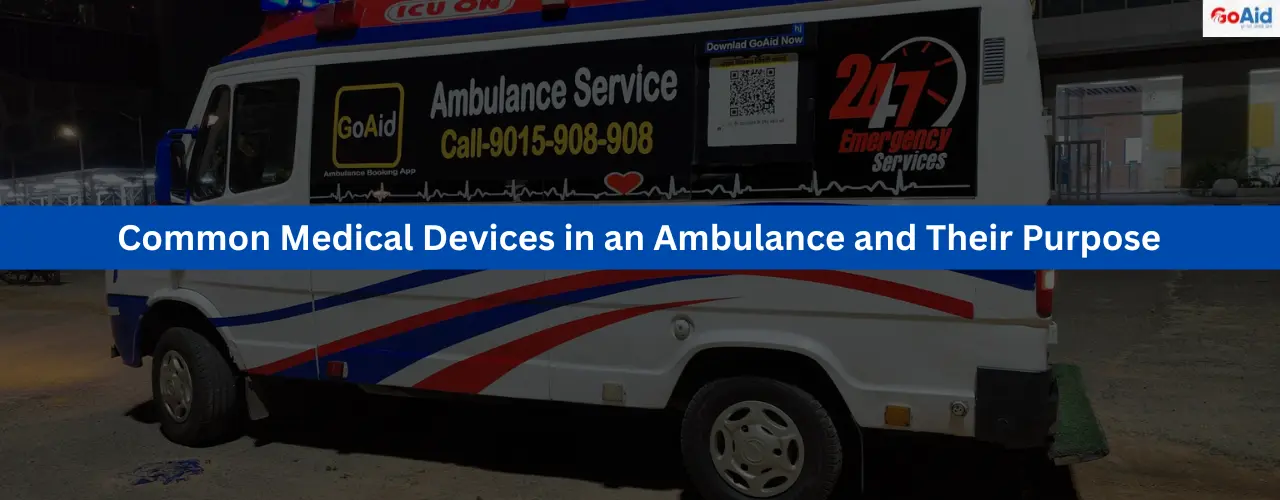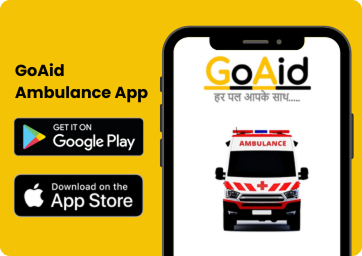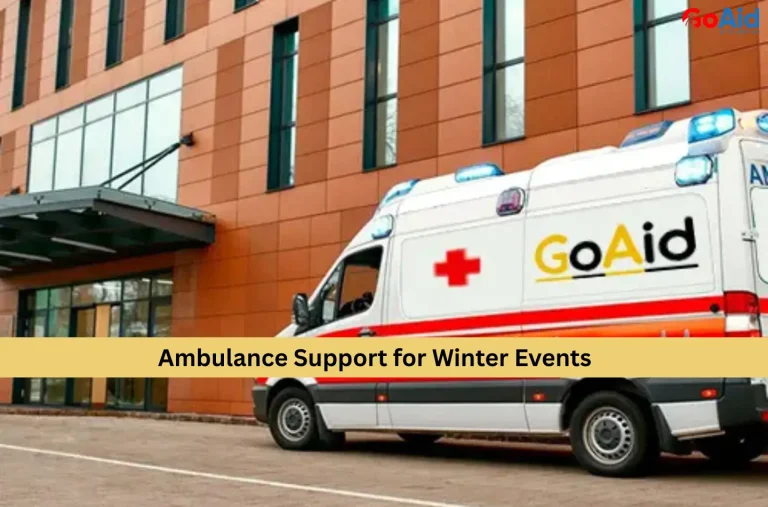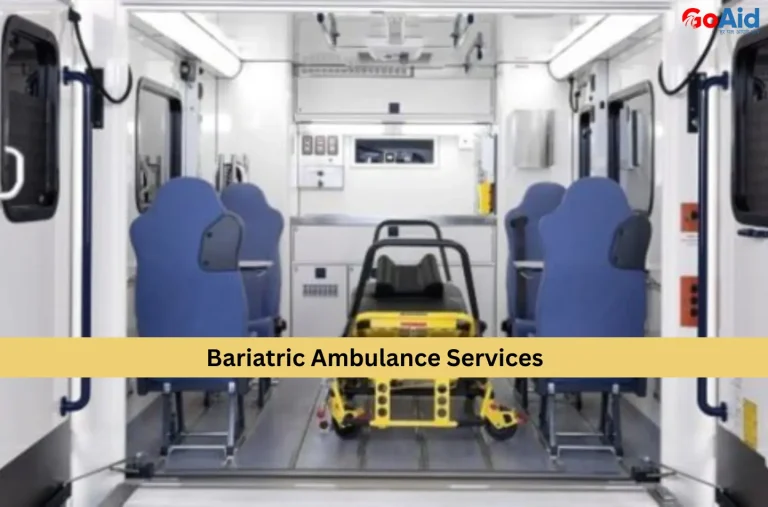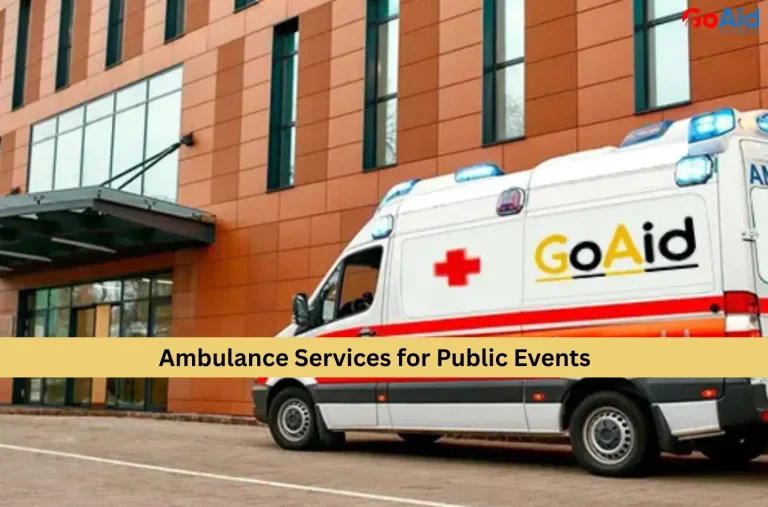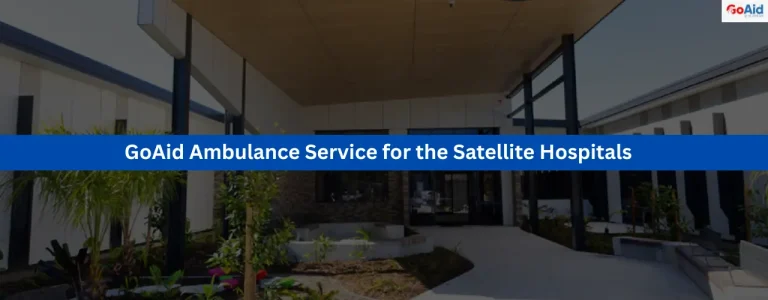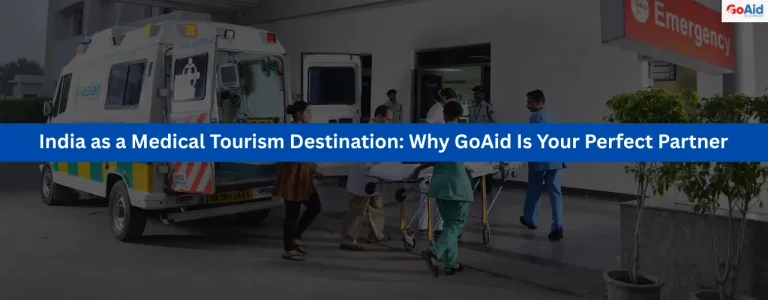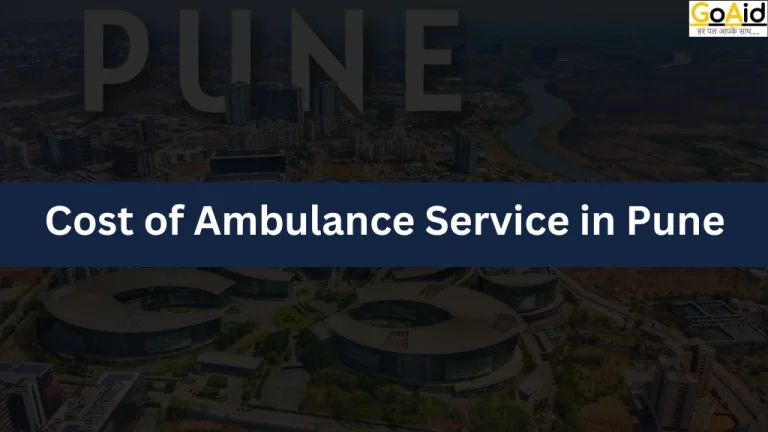In India, ambulances are equipped with various common medical devices to provide life-saving care during medical emergencies. These medical emergency tools help stabilize patients before they reach the hospital. Each medical device plays a crucial role in emergency response.
In this blog, we provide important information about common medical devices in ambulances, as well as each type of ambulance service and its associated common medical devices. Are you excited to know about it? If yes, then why wait?
LetŌĆÖs start reading this blog
What is the General Medical equipment in Ambulances in India?
In India, ambulance equipment varies depending on the type of service. Still, general medical equipment includes oxygen cylinders, stretchers, suction machines, BP monitors, and first-aid kits, essential for basic to critical patient care.
Common Medical Devices Depending on the Types of Ambulances
In Medical emergencies, each ambulance type is designed for specific medical situations and comes equipped with a unique set of medical emergency tools.
1. Normal Ambulance Service
This ambulance is used for transporting stable, non-critical patients. It provides basic medical assistance during transfers and is ideal for checkups, hospital discharges, or non-emergency appointments.
- Stretcher: Used to safely carry patients in and out of the ambulance without exertion, ensuring patient comfort and stability during transport.
- First-aid kit: Contains wound dressings, antiseptics, bandages, and essential supplies to manage minor injuries or provide initial support.
- BP Monitor:┬Ā Measures the patient’s blood pressure levels, helping monitor cardiovascular stability en route to a healthcare facility.
- Pulse Oximeter:┬Ā Checks oxygen saturation in the blood and provides early detection of respiratory issues during the journey.
- Oxygen Cylinder: ┬ĀOffers supplemental oxygen to patients experiencing mild breathing difficulty or fatigue during transport.
2. BLS Ambulance Service (Basic Life Support)
This ambulance is designed for patients who need basic monitoring and assisted care. Staffed by trained paramedics, it offers emergency support for moderately ill patients.
- Defibrillator: ┬ĀDelivers electric shocks to a patientŌĆÖs heart in cases of cardiac arrest to restore a normal heartbeat.
- Suction Machine:┬Ā Removes fluids like mucus or vomit from airways, ensuring the patientŌĆÖs breathing passage remains clear and functional.
- Ambu Bag: Helps patients breathe manually when theyŌĆÖre unable to do so independently, especially in low-oxygen situations.
- BP Apparatus & Stethoscope: ┬ĀUsed to monitor and assess vital cardiovascular signs and blood circulation in real time.
- Basic Airway Equipment: ┬ĀIncludes oropharyngeal and nasopharyngeal tubes that help maintain open airways during transit.
3. ALS Ambulance Service
This ambulance is meant for patients in critical condition who require advanced interventions and real-time vital monitoring. Staffed by ALS paramedics or doctors.
- ECG Monitor: ┬ĀTracks the electrical activity of the heart, helping detect┬Ā
arrhythmias or cardiac distress during transport.
- Ventilator: ┬ĀProvides mechanical breathing support to patients who are unconscious or unable to breathe effectively on their own.
- IV Equipment: ┬ĀUsed to deliver fluids, medications, and nutrients directly into the bloodstream for immediate therapeutic effect.
- Advanced Defibrillator:┬Ā Equipped with ECG and pacing modes, it handles complex cardiac conditions and shock delivery.
- Multi-parameter Monitor: ┬ĀSimultaneously tracks ECG, SPO2, blood pressure, respiration rate, and temperature for real-time data.
Also Read: Difference between BLS Ambulance and ALS Ambulance
4. ICU Ambulance Service
ICU Ambulance Service functions like a mobile Intensive Care Unit, built for patients who require life-saving support during transport, including continuous monitoring and advanced treatment.
- Advanced Ventilator: ┬ĀSupports or replaces spontaneous breathing, tailored for patients with severe respiratory failure or coma.
- Infusion Pumps: Regulates and delivers exact doses of medications or fluids intravenously, essential in critical care.
- Syringe Pumps: ┬ĀAccurately infuse small volumes of medicine over time, useful for drugs that require slow, steady dosing.
- Cardiac Monitor: Offers continuous heart rhythm monitoring to alert for any abnormalities in real time.
- Portable X-ray: ┬ĀHelps assess internal injuries or fractures immediately, especially in trauma or ICU-level patients.
5. Air Ambulance Service
Air Ambulance is used for long-distance, intercity, or remote-area evacuations. It offers rapid, in-flight critical care support and fast transport to specialized hospitals.
- Compact Ventilator: A space-saving breathing device ensuring patients receive respiratory support even in high-altitude conditions.
- Portable ECG Monitor: Tracks cardiac activity mid-flight and helps in real-time heart rhythm analysis.
- Medical Oxygen Unit:┬Ā Designed to provide pressurized, altitude-adjusted oxygen supply onboard.
- Emergency Drug Kit: Contains life-saving medicines for cardiac arrest, pain, allergic reactions, and more.
- Telemetry Unit:┬Ā Sends live patient vitals to the destination hospital, enabling preparedness in advance.
6. Train Ambulance
Train ambulance isIdeal for long-distance, cost-effective medical transport. Suitable for stable patients requiring full monitoring and comfort over extended travel time.
- Adjustable Stretchers:┬Ā Provide a comfortable resting position and prevent bedsores during multi-hour or multi-day journeys.
- Medical Beds: ┬ĀAllow patients to rest and receive bedside medical support during long train transport.
- Oxygen Support System: Includes oxygen tanks and delivery units to maintain constant respiratory support during long trips.
- Vital Monitors:┬Ā Track heart rate, BP, oxygen levels, and other vitals continuously.
- Trained Medical Staff: ┬ĀWhile not a device, their presence ensures equipment is used effectively throughout the journey.
7. Oxygen Ambulance
Oxygen Ambulance is designed for patients experiencing breathing issues like COPD, asthma attacks, or post-surgical oxygen dependency. Provides high-flow oxygen during transport.
- Multiple Oxygen Cylinders: Ensures an uninterrupted oxygen supply even during prolonged transport or multiple stops.
- Flow Meter:┬Ā Controls and monitors the oxygen flow rate to ensure accurate dosage.
- Oxygen Masks & Cannulas:┬Ā Deliver oxygen comfortably through the nose or mouth depending on patient needs.
- Pulse Oximeter: ┬ĀMeasures oxygen saturation and alerts in case of hypoxia.
8. Cardiac Ambulance
This ambulance is equipped for emergency heart-related conditions such as cardiac arrest, angina, or arrhythmias. These units offer ACLS-level support.
- Advanced Cardiac Monitor: Tracks real-time ECG, pulse rate, blood pressure, and oxygen levels for cardiac assessment.
- External Defibrillator: ┬ĀUsed to correct life-threatening arrhythmias with electric shocks.
- Cardiac Emergency Drugs:┬Ā Includes medications like nitroglycerin, aspirin, adrenaline, and others for immediate heart care.
- Portable Ventilator:┬Ā Supports patients with congestive heart failure who have breathing difficulties.
9. Neonatal Ambulance Service
This ambulance is dedicated to transporting premature babies or critically ill newborns, with equipment tailored to tiny bodies and fragile systems.
- Infant Incubator: ┬ĀMaintains controlled temperature, humidity, and sterile environment for neonates.
- Neonatal Ventilator:┬Ā Supports weak or undeveloped lungs in premature babies or those with breathing complications.
- Phototherapy Unit: Treats jaundice by exposing the baby to safe light waves.
- Neonatal Monitor: Tracks small-scale vital signs such as SPO2, heart rate, respiration, and temperature.
10. Dead Body Ambulance
Dead Body Ambulance is meant for transporting deceased individuals in a hygienic, respectful, and temperature-controlled environment over short or long distances.
- Freezer Box: Keeps the body preserved at a low temperature to prevent decomposition.
- Trolley Stretcher:┬Ā Helps in the dignified movement and loading of the body into the ambulance.
- Sealed Cabin: Prevents odor or contamination and ensures proper hygiene and safety during transport.
The Best Ambulance Service that Provides the Latest Medical Equipment Onboard
GoAid Ambulance Service, the best ambulance service in India, offers well-equipped ambulances with state-of-the-art common ambulance medical machines across multiple cities. Whether it’s a basic ambulance or a fully-equipped ICU unit, GoAid ensures every vehicle is stocked with modern medical emergency tools tailored to the patient’s needs.
This ambulance service is known for its 24/7 ambulance service, 10-minute response time, and trained medical teams. GoAid provides efficient care and advanced ambulance equipment in metro cities and beyond. With services for air, cardiac, neonatal, and oxygen-based emergencies, they continue setting new standards in India’s emergency healthcare sector.
Conclusion to the Common Medical Devices
Ambulance equipment plays a life-saving role in IndiaŌĆÖs emergency healthcare system. From general ambulance equipment in basic units to advanced medical equipment in the ICU and air ambulances, each device is critical. GoAid Ambulance Service, recognized as the best ambulance service in India, provides fully-equipped, reliable, and 24/7 ambulance service, ensuring timely and safe patient care across the nation.
FAQs Related to the Common Medical Devices
Question 1: What are the most common medical devices in an ambulance?
Answer: Stretchers, oxygen cylinders, BP monitors, defibrillators, and first-aid kits are the most commonly used ambulance equipment.
Question 2: What equipment is in an ICU ambulance?
Answer: ICU ambulances have ventilators, cardiac monitors, infusion pumps, and other advanced medical equipment for critical care.
Question 3: Is GoAid Ambulance equipped with modern medical devices?
Answer: Yes, GoAid Ambulance Service provides updated, high-quality medical emergency tools across all its ambulance types.
Question 4: Are BLS and ALS ambulances different in equipment?
Answer: Yes, BLS ambulances have basic ambulance equipment, while ALS ambulances include ECG, defibrillators, and IV support.
Question 5: Does GoAid offer 24/7 ambulance services?
Answer: Yes, GoAid Ambulance Service offers 24/7 ambulance service with trained paramedics and fast response.
Question 6: What devices are used in a cardiac ambulance?
Answer: Cardiac ambulances use ECG monitors, defibrillators, ventilators, and cardiac drugs to manage heart-related emergencies.
Question 7: WhatŌĆÖs inside a neonatal ambulance?
Answer: Neonatal units include incubators, infant ventilators, and advanced medical equipment designed for newborns.
Question 8: Are oxygen ambulances different from normal ambulances?
Answer: Yes, oxygen ambulances have multiple oxygen sources, masks, and monitoring systems focused on respiratory support.
Question 9: What is a dead body ambulance equipped with?
Answer: These carry a freezer box, sealed compartments, and a stretcher for hygienic and respectful transport.
Question 10: Why is GoAid considered the best ambulance service in India?
Answer: Because of its modern ambulance equipment, national reach, quick response time, and trusted 24/7 ambulance service.

